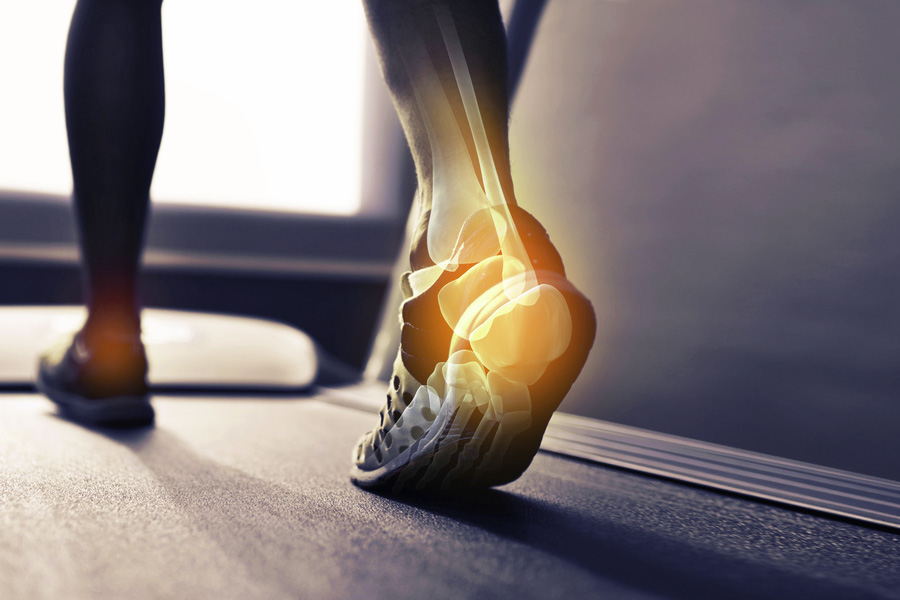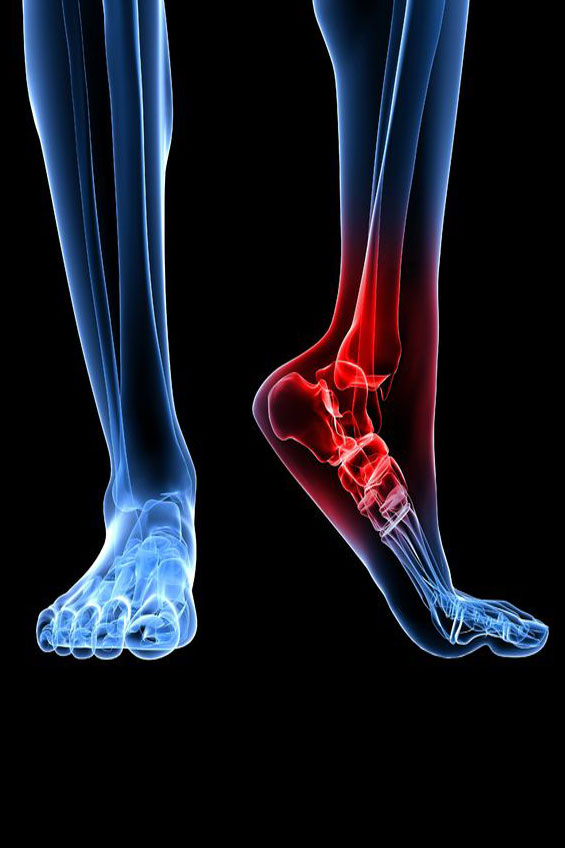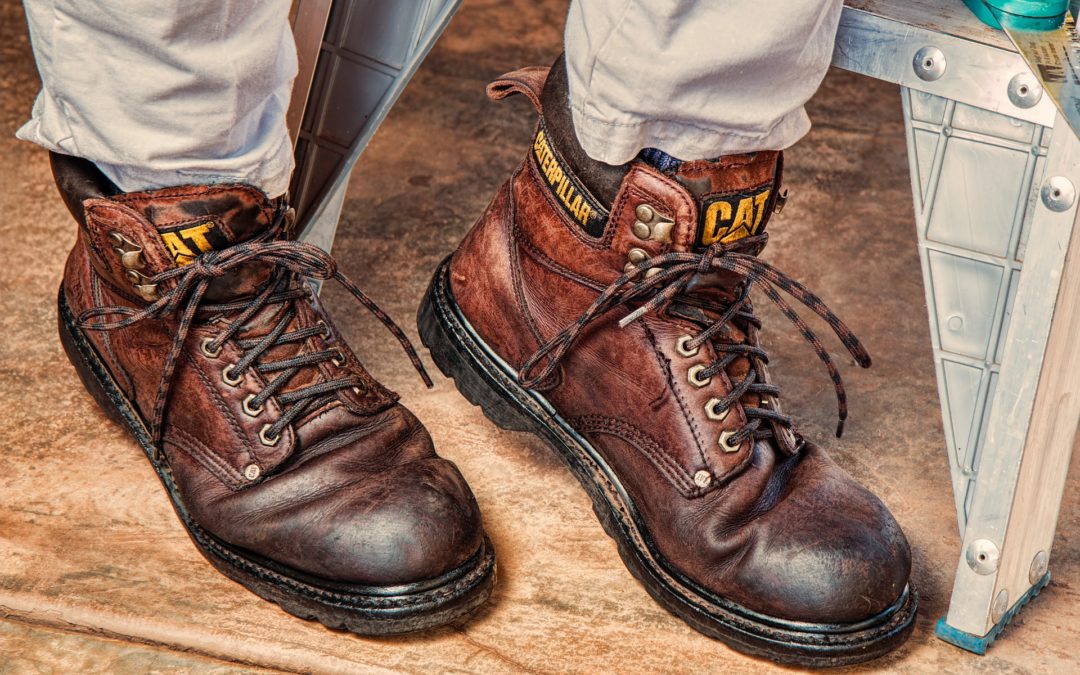Protective and safety footwear must be worn to protect your feet from injuries while you operate in the workplace. This is obvious. We all know this. As well as that thought, it’s obvious that you won’t be able to walk as well as you do with regular walking shoes as the design, weight and features cause a reduction on your step and stride length[1].
I want to make clear that injuries can occur in any occupation regardless of whether you’re sitting or standing, safety shoes or high heels. The goal of this article is to provide clarity regarding effective recovery for those who have to wear safety shoes to reduce risk of musculoskeletal aches, pains and injury.

The Physical Demands
Safety boots will never be as flexible and light as a walking shoe and because of this your foot movements are restricted and the need to increase ankle torque and effort to propel you forward during walking will increase your physical demands and thereby puts you at higher risk for musculoskeletal injuries[1].
Let’s say for simplicity’s sake a regular person uses 10 muscles to walk. For safety shoe wearers who walk, stand, squat, lunge and reach for long hours will have to recruit double or more muscles to function effectively (remember? I’m explaining this for simplicity’s sake).
This is your sport. Your work is your sport. Tennis legend Roger Federer’s daily occupation is tennis player and he is the best in his sport, he operates many hours a week to play and practise tennis and of course has a full team of health professionals who keep his physical body in shape, fit and flexible. Mr Federer requires a tennis racquet to play. You require a safety shoe to work. But where is your rehab team? You deserve rehab and care too so that you can perform at full capacity at work effectively and efficiently.
Unfortunately, the knowledge and awareness of the need for routine health care and maintenance is little as people are simply being ‘reactive’ to their health. This means that people only react or take care of their health when there’s a problem. I want you all to understand that your physical body is stressed out, muscles and ligaments may be strained and your joints may be wearing out. No one is immune to this. The only difference is the severity of this progression. So I want to encourage you to be PROACTIVE with your health.
Treat your physical body and your health like a temple or like a trillion dollars. If there’s any damage sustained well then your lifestyle is affected. Can you imagine a person who is highly dependent on their job to produce income so that they can sustain their lifestyle? Well they are being REACTIVE to their health. They should be PROACTIVE and actively maintain their health on a routine basis so that they can minimise or prevent the incidence of injury and on the bigger picture ensure that they are ABLE to continue to produce their income or keep their business functioning.
For whatever situation situation you’re in and whether you are committed to investing in your health or not, I would like to start you off on your PROACTIVE health lifestyle by giving you 3 essential steps to recover better after a long day at work wearing safety boots.

3 Steps to recover better
1/ Cold water and ice baths :
After a long day wearing safety footwear and using more muscles to walk, expect your feet and ankles to be hot, swollen, numb and/or tingling. It’s a nice feeling to free your feet from footwear but to quickly hasten the inflammation reduction plan, you must get a bucket of cold water with some ice cubes and place your feet into this cold bath. Cold water causes vasoconstriction which helps push away any swelling.
*PLEASE NOTE: If you suffer from disorders from temperature changes such as Raynaud’s Disease, please skip this step.
2/ Massage and stretching :
The goal of step two is to help relax and ease muscle tension. The first thing to do is to focus warm water from the shower head to your tight or strained areas such as the calves, hamstrings, glutes and the lower back. By applying heat, our musculature can relax and help ease tension. After you’ve finished showering and the bathroom, proceed to start calf and hamstring wall stretches. I demonstrate in my video. Click on the link below:
3/ Elevate your feet
Time for the best part of this recovery program. It is by far the easiest! All you have to do is simply position a soft and thick pillow under your feet to elevate your legs while you are sitting in a chair or if you’re in bed. If you find that you’re a kicker while you sleep, then you can position a brick or a ‘Yellow Pages’ book to help keep the leg elevation.
For elevated results
If you would like to take your recovery to another level and commit to a rehabilitation plan to keep you in health peak performance, then please shoot me an email with your enquiry and I can definitely set up a rehab plan up.
As I discuss in my video above, having a health practitioner to mediate and design your rehabilitation plan is vital to health success. The main focuses of muscle rehab is to loosen, stretch and strengthen. The goals and plans revolve around those three muscle factors. As well as that, I also go in depth with your walking mechanics and inform you of your posture, which muscles need to strengthen and which needs to stretch.
WALK SMARTER NOT HARDER!

Grant Duong, Podiatry
At the Triumph Institute located in the heart of Bankstown, Sydney we also practice podiatry. It’s a medical field that specialises in the prevention, diagnosis, treatment and rehabilitation of problems and issues that affect the lower limbs, from the lower back right down to our feet.
References:
[1]Benjamin, D., Ahram, T., De Mu, E., Choukou, M.A., Abdi, E., Gardan, N., Boyer, F.C., Regnault, P. & Taiar, R.(2016) Comparison of FAP scores with the use of safety footwear and regular walking shoes. Theoretical Issues in Ergonomics Science. pp: 1-12
[2]Tian, M., Park, H., Koo, H., Xu, Q. & Li, J. (2017) Impact of work boots and load carriage on the gait of oil rig workers. International Journal of Occupational Safety and Ergonomics. 23(1): 118-126


